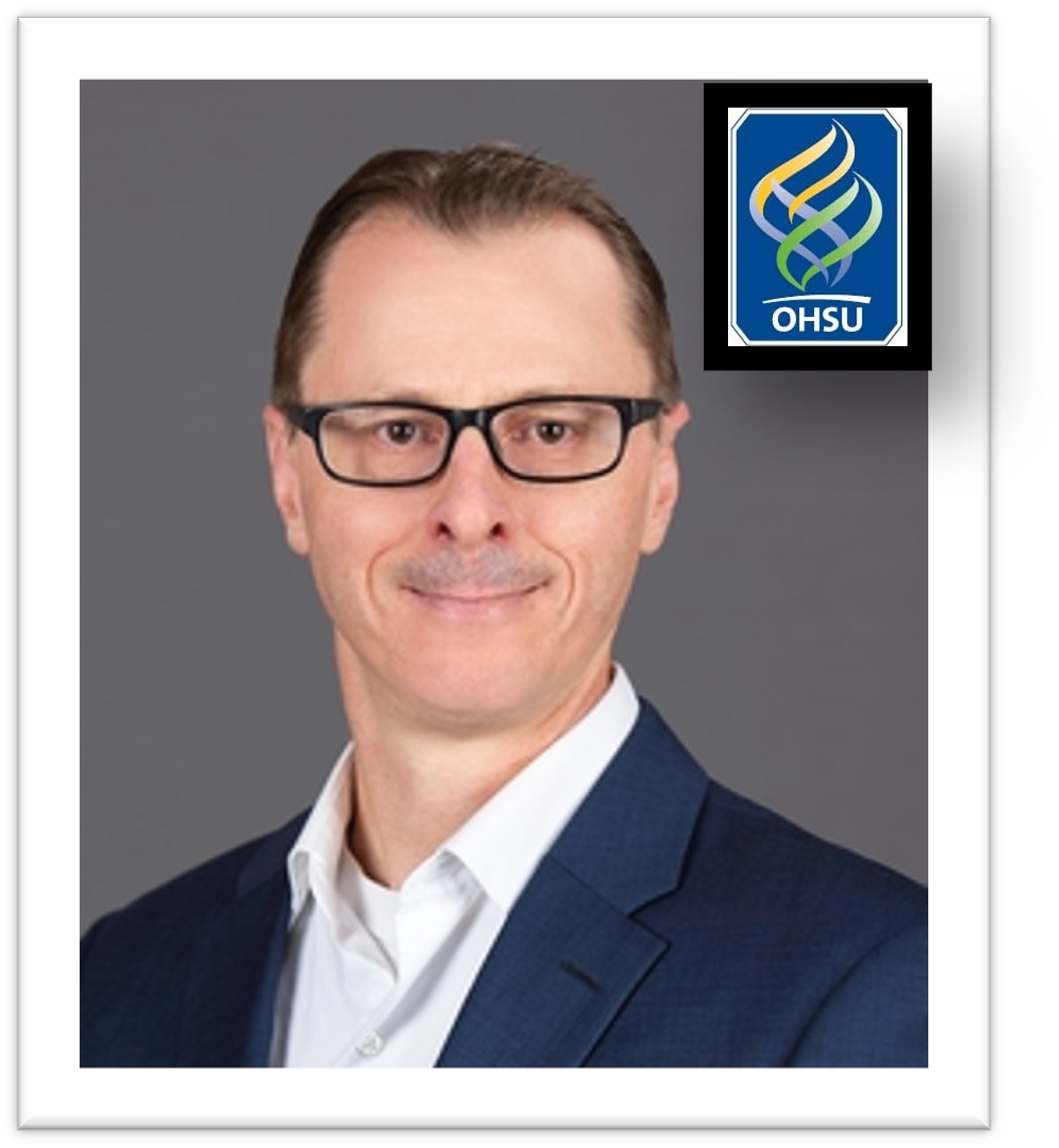Voice of Industry with OHSU’s Tech Transfer leader

Travis G. Cook recently met with Oregon Bio to discuss OHSU’s tech transfer initiatives. He’s the senior director of Technology Transfer at Oregon Health & Science University, champions research and development by promoting an innovative and entrepreneurial culture. Prior to OHSU, he served as director of business development at Galena Biopharma (Nasdaq: GALE), an adjunct professor at University of Portland bringing concepts of tech commercialization in the school’s Technology Entrepreneurship Certification program with previous appointments at Kalypsys, Inc., Ansata Therapeutics, Inc. and Mixture Sciences, Inc. in San Diego, California.
Q1: What newer trends are you seeing in tech transfer?
 A1: Major research institutions, such as OHSU, are tasked to fuel innovation communities in many non-traditional geographies. As a result, university-based technology transfer offices are broadening their roles to facilitate the development of regional ecosystems where resources may be limited all together or within certain industry sectors driving a the need to disrupt cradle to grave innovation management strategies common to technology transfer. Oregon has a growing life science sector and OHSU is stepping up its resources to help facilitate the decade-plus of sector growth. OHSU Innovates, a collaborative network co-led by Technology Transfer and Collaborations and Entrepreneurship supports the innovation and entrepreneurial ecosystems at OHSU and beyond. It requires interdepartmental collaboration and dedicated resources to recruit and develop staff to provide the key capabilities as an economic driver to meet all the needs of our innovative employees to ensure effective community partnerships with entrepreneurs, investors, startups, research foundations, patient advocacy groups, donors, state legislators and other strategic collaborators. There is a growing trend to incorporate innovation and entrepreneurship into the promotion and tenure process. At OHSU, we see it as a way to reward our faculty in non-traditional ways.
A1: Major research institutions, such as OHSU, are tasked to fuel innovation communities in many non-traditional geographies. As a result, university-based technology transfer offices are broadening their roles to facilitate the development of regional ecosystems where resources may be limited all together or within certain industry sectors driving a the need to disrupt cradle to grave innovation management strategies common to technology transfer. Oregon has a growing life science sector and OHSU is stepping up its resources to help facilitate the decade-plus of sector growth. OHSU Innovates, a collaborative network co-led by Technology Transfer and Collaborations and Entrepreneurship supports the innovation and entrepreneurial ecosystems at OHSU and beyond. It requires interdepartmental collaboration and dedicated resources to recruit and develop staff to provide the key capabilities as an economic driver to meet all the needs of our innovative employees to ensure effective community partnerships with entrepreneurs, investors, startups, research foundations, patient advocacy groups, donors, state legislators and other strategic collaborators. There is a growing trend to incorporate innovation and entrepreneurship into the promotion and tenure process. At OHSU, we see it as a way to reward our faculty in non-traditional ways.
Q2: Has the pandemic changed how you view ‘likely candidates’ of emerging firms?
A2: The pandemic has accelerated our use of innovative telecommunication technologies allowing us to develop stronger relationships with people all over the world. It has resulted in an increase of partnerships with the community who are hundreds if not thousands of miles away from a region that may not be an industry hub for certain sectors.
Q3: Is Oregon unique with tech/IP that is launching here?
A3: Oregon is unique. Most think Oregon is limited to high tech, apparel, food, and forestry. However, over the last decade, we have seen rapid growth in the life science sector and we see companies proliferate and succeed in the region. This is an important industry sector for Oregon and there’s a real opportunity for the community to grow at a pace that we’ve never seen in the state before.
Q4: How has the art and science of tech transfer and commercialization changed or been challenged by the pandemic?
A4: The pandemic has really helped us develop relationships virtually. We no longer need to be in industry hotspots to network and drive business development opportunities. Working in a digital environment makes us more effective with time management and we are much more active in areas of the world that were more challenging to reach. This has changed the way we target our customers and we’ve seen an increase in community engagement.
Q5: Are you seeing different opportunities now that might have not been presented pre-pandemic, before March, 2020?
A5: Everyone has been desperate for human engagement; this has led to an increase in outreach in all industry sectors. Institutional investors are realizing they can stay connect remotely; entrepreneurs are finding they can live where they want to and therefore, investors are supporting companies in other regions that they may have been reluctant to accommodate pre-pandemic.
Q6: Where do you predict local tech transfer and similar collaborative efforts will go in the next 2-5 years?
A6: The community will continue to look to regional research institutes to drive innovation and support economic development activities within the state. Technology transfer is here to support those activities and we need to continue to diversify our staff so that we can bring new perspectives to the field and prompt growth within the region. What strengths of these disciplines will be needed to succeed in the national or international markets? Technology transfer professionals will need to be multi-disciplined, having technical expertise in science, business, finance, law and philanthropy as well as understand how new venture creation will fuel economies of scale.
The local life science community can help OHSU’s commercialization efforts by collaborating with us in our effort to develop the regional ecosystem, including spinning companies out of the university. Working together allows us to source each other’s expertise to develop the sector. We have observed how our entrepreneurial employees have benefited from industry engagement; it changes their perspective on what it takes to move a technology out of the university for public benefit. # # #
